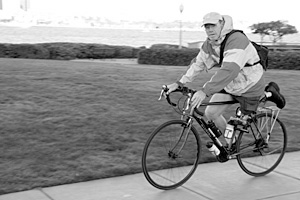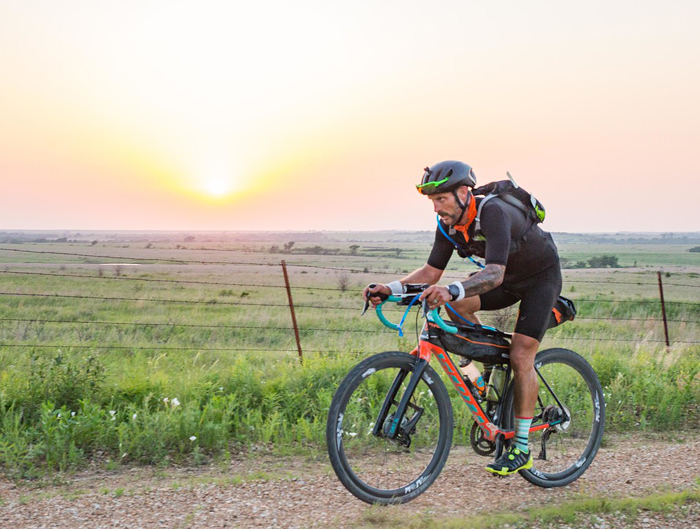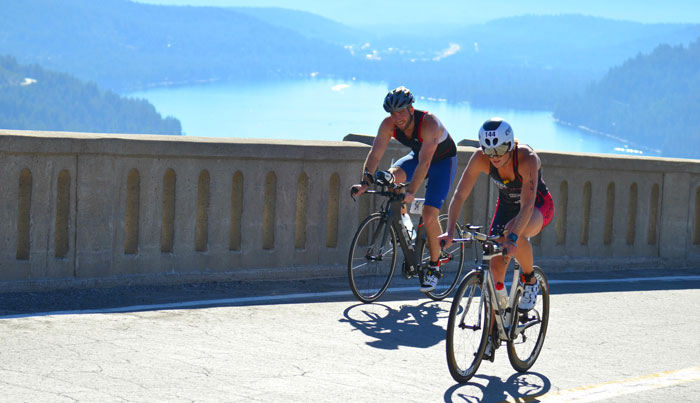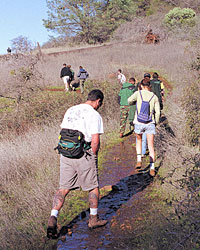- Tahoe’s Nevada Beach Tops the List of Hard-to-Book Campgrounds - 07/17/2024
- Cannabis Watershed Protection Program Cleans Up Illegal Grow Sites - 07/10/2024
- French Fire - 07/05/2024
Steve Wigen’s achievements stand out even among cyclists with two legs
Story and Photos by Ramona d’Viola
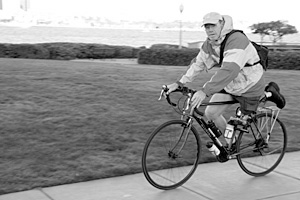
Steve Wigen is an endurance athlete, a cyclist to be exact, who picked up the long-distance habit later in life. Like so many of his ilk, the 49-year-old Wigen is one of those people who can put his head down into a head wind, crank away for hours and find it enjoyable.
Some years ago, Wigen, an avid traveler, was in need of an adventure when he decided upon a cross-country bike trip. With little more than a bedroll and a few necessities stuffed into a well-worn messenger bag, he rolled out of California on his 18-speed Nishiki. His ultimate destination would be his home state of Minnesota. Not being in much of a hurry, however, Wigen took a southerly route in hopes of catching the Tour of Georgia and star rider Lance Armstrong before turning north.
He rode about 4,000 miles in four months, solo. Covering that amount of mileage under one’s own power and without support is an impressive accomplishment. What makes it extraordinary in Wigen’s case is that he has only one leg.
In 1986, while waiting to cross a street in San Diego’s bustling Pacific Beach district, Wigen and his brother, David, were sharing a bag of cookies when he noticed a car going way too fast heading their way. He had just enough time to shove his younger sibling out of the way before being struck.
“David got tossed down the street, but I took the full impact before I could get out of the way,” he recalls. “I made eye contact with the driver briefly before he struck me, but I don’t remember much of him.”
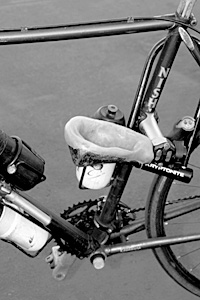
Wigen, still conscious, lay in a heap on the sidewalk – his left leg severed inches below the hip joint – and watched in dismay as the car sped away.
Wigen’s femoral artery had been ripped apart and was spurting blood at an alarming rate. He remembers looking up at a car making a turn, but the severity of the situation didn’t register with the passenger, and the car continued without stopping to help. He was in danger of bleeding to death when a student leaving his martial arts class came to his aid. Using his rank belt as a tourniquet, the student kept Wigen from bleeding out until an ambulance arrived.
The hit-and-run driver was never apprehended.
After several weeks in the hospital, Wigen was released to the care of his family. He began his recovery process by learning to walk again with a prosthesis. But with only a few inches of femur bone left, he found the fitting apparatus for his new limb uncomfortable. It was painful to walk or stand for any length of time, although sitting was also uncomfortable.
One of Wigen’s friends, a woman cyclist, recognized the frustration he was experiencing due to his lack of mobility and suggested he try riding a bike.
Although dubious at first, Wigen bought a bike and made a couple of minor modifications to accommodate his prosthesis. He removed the superfluous left crankset and attached a specially fitted cup off the seat tube using a short handlebar stem. For his cross-country trip, Wigen attached a PVC tube in the space his leg would occupy, and carried his handmade, ultra-light sleeping gear inside of it.
When riding, Wigen’s shiny articulated ‘leg’ folds in half and clips to itself mid-thigh; his metal knee joint is supported by the specially designed cup.
He taught himself how to pedal with one leg, pushing and pulling throughout the entire 360° stroke – exaggerating out of necessity the pedaling technique recommended by top cycling coaches. He has perfected it by logging more miles than most able-bodied riders. Upon first glance, you might miss that he has only one leg – until you see the sole of his shoe pointing skyward as he pedals past.
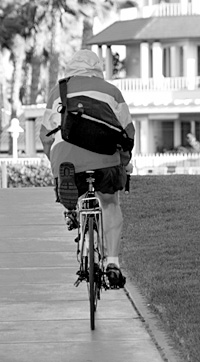
“I’m most comfortable when riding,” he says. “The discomfort of the prosthesis disappears when I’m in the saddle.”
At about the same time he took up riding, Wigen began to study Tai Chi and yoga. He credits these disciplines for helping him actualize his recovery. Without a trace of the self-pity commonly referred to as “victim’s mentality,” Wigen constantly pushes the boundaries of his ‘handicap.’
An aspiring sailor, Wigen lives aboard his boat in San Diego Bay. He’s become a crewmember-in-training on a former Lipton Cup winner named Brushfire – a 52’ Sparkman & Stephens racing yacht, owned by Craig Mueller, another amputee sailor. Mueller, a local sailing legend, is a major benefactor to “Challenged America,” an organization dedicated to teaching handicapped people how to sail.
Wigen plans another marathon ride in Australia, maybe with some company this time around. He hopes to garner pledges for each mile he rides and create a scholarship to assist kids seeking higher education in poor rural areas throughout the world. For Wigen, the bike is more than transportation – it’s his magic carpet to adventure and independence. Adventure with a higher purpose. Independence without limits.

